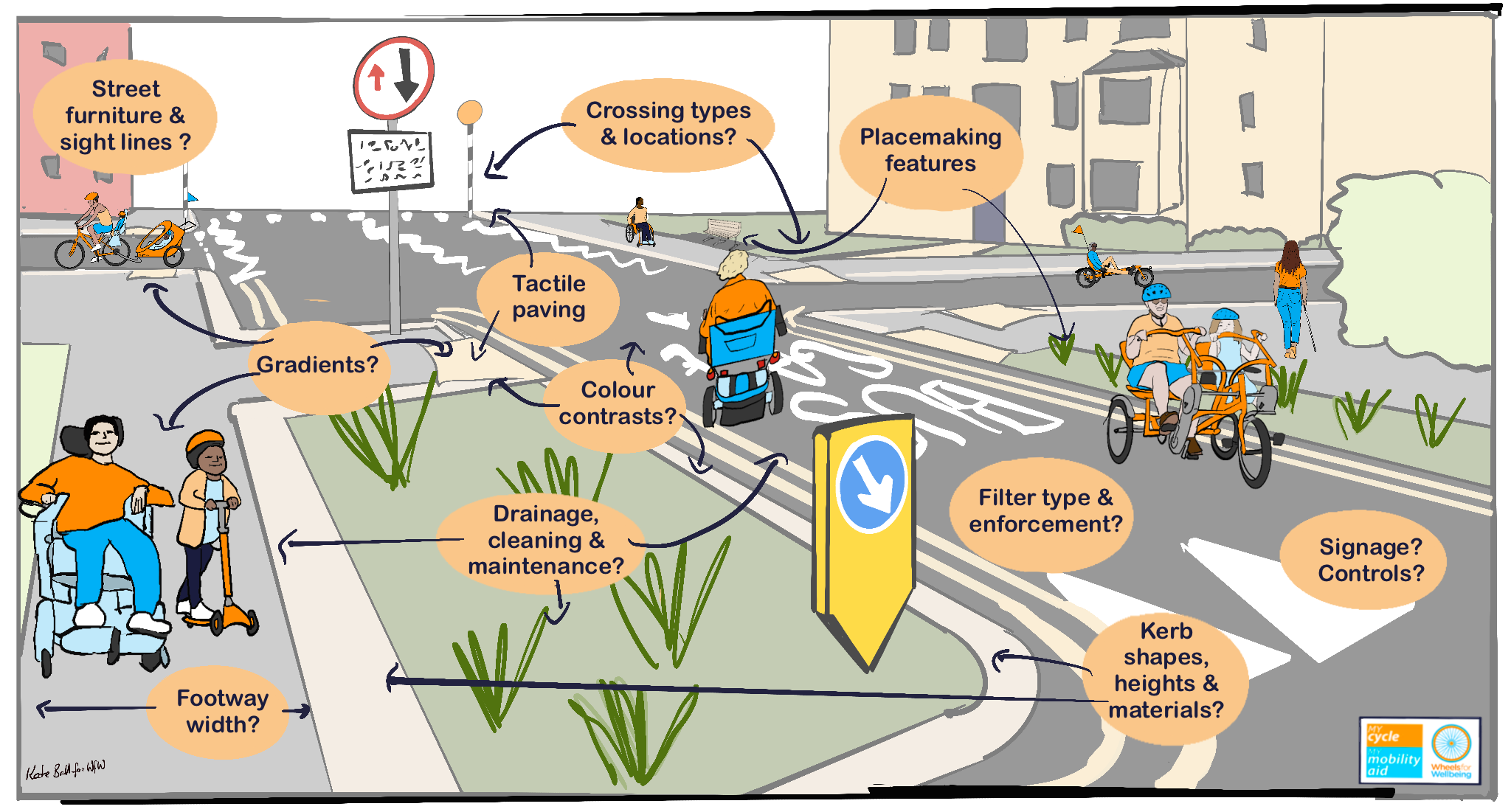This sheet is to aid discussion in accessible design for Disabled people walking/wheeling, cycling, using public transport & private vehicles
Download “Thinking about modal filters” in png format
Download “Thinking about modal filters” in docx format
Download “Thinking about modal filters” in pdf format

Modal filters – key points
- Can be full time, part-time, one/two way, restrict all of some types of motor vehicle & sometimes cycle access. May have physical barriers, signs-only or CCTV enforced. Include bus gates, one-way streets, active travel road filters, pedestrianised area entrances & school streets.
- Modal filters reduce danger to everyone in an area from drivers, air pollution & noise pollution. Can be used to reduce motor vehicle volumes & speeds enough to enable on-carriageway inclusive cycling, removing need for cycle lanes. When modal filters are considered:
- Infrastructure installed must improve accessible walking/wheeling (& cycling) options, including footways & crossings;
- Detectable (>60mm) footway kerbs & flush crossing kerbs with tactile paving must be used;
- Where areas are closed to motor vehicles (& cycles) or where alternative driving/cycling routes will be considerably slower than passing directly through a filter, consider equality of Disabled access to homes & services, including carers & assistance e.g. possible filter exemptions.
This is a discussion sheet, and does not imply support for any specific infrastructure design or category of designs. Wheels for Wellbeing call for inclusive consultation with Disabled people to ensure public space designs are accessible for everyone.
